VANDALISM
We live in an information-rich society, constantly bombarded by data, imagery, and statistics thrust under our noses, supplied direct to you, the individual, in a huge variety of ways, for an equally huge and diverse spectrum of reasons. Newspapers, TV, radio, the internet, advertising, marketing, politics, even entertainment, all use data to frame and govern our view on the world, its history, present, and its future.
Information is probably the most powerful social tool for the new Millennium; yet rarely are we encouraged to examine the motivations of those who own the means of producing such information, the conditions applied to its manufacture and presentation, and the undeclared subtexts and agendas present within it. To sift through this huge volume of input for truth and relevance requires an increasingly sophisticated sensibility, although for the most part, in pursuit of the maintenance of the status quo, we are asked simply to accept what is put before us.
Part of a photographer's job is to look at the world and contribute to this sifting through of information, stilling moments in time and recording scenarios for public information; telling neatly tied up stories that fit the mould for consumption by clearly defined market sectors. Unfortunately life is not quite like that, being slightly too sprawling and contradictory to pin down in 500 words and a half page picture.
When I first moved to Bristol I was struck by the intelligence and artistry of its street graffiti. I was also struck by its content. At first I tried to shoot pictures of what I saw including its context, but over the course of time it became evident that this was not the way forward. It was what the graffiti said that was so striking, both literally and figuratively, not where it was situated. It was the emotional truth reflected in it, that was so attractive; and just as in life, it was necessary to ignore some of the jumble in order to concentrate, heighten and define its essence.
The criminalisation of graffiti also began to intrigue me. Public space has been adorned by public information for an extremely long time. For a public art form that on occasion is startling in its talent, incisiveness, wit, and execution; graffiti is often the target of rabid disgust from certain sections of society. Granted, tagging can be unsightly and a nuisance, but on closer inspection, contained within, can be gems of modern urban poetry. It is just a case of looking for it, like searching for diamonds in old lumps of coal. As with most things, it is a case of separating the wheat from the chaff, rather than using the lowest common denominator to tar and feather the whole.
Perhaps it is a chicken and egg situation. Tagging is a fairly modern phenomenon, born of the modern urban environment. It is generally acknowledged to result from a desire to personalise an impersonal environment, to sign a graphic name and proclaim your own unique territory and identity amongst a faceless mass of others. The modern urban environment is a direct product of modern urban architecture, town planning and commerce. The inhabitants of this environment not only have to endure living in it, they are forced to pay for the privilege too.
It might cost a bit to paint over graffiti, but it cost a damn sight more to fund the high rise, high volume, cheapskate solutions to modern housing problems that provide an eyesore to generation on generation. But how often does one see renegade planning officers on the run for crimes against humanity and the misappropriation of public funds.
Public perhaps is the keyword here though. Information accrues power according to how many people it reaches, or not. Markets are built on information and who is privy to it, or not. Public opinion is built in the same way, and it seems more than ever before that society is just a market to which anything can be sold. The wrong information reaching the wrong ears can cause fluctuations in the marketplace, which can be costly to those that have a lot invested. As wealth often equates to power, it is no wonder that publicly voicing opinions of dissent and dissatisfaction can lay one open to accusations of criminality. Yet the cornerstones of democracy are meant to be freedom of information and freedom of speech.
It is age-old journalistic practice to collate the comments of others, and after selective editing, to present the results as a valid measure of public opinion. That is exactly what I have done here, except that these visual voxpops are not created by purveyors of a stilted and institutionalised morality, they are just anonymous individuals reacting to their environment.
Our every day visual surroundings are dominated by advertising. As consumers of this environment we are offered no choice in this. Advertisers pay for wall space but it is taken for granted that the access to the market they seek is for free. There is no payment to the consumer involved for the privilege of never-ending forced exposure to their products. It is a personal value judgement, but which is preferable, the unceasing hard sell of that which you can never, or might not wish to possess: or valid and original human comment on the state of modernity?
In acknowledgement of the issues surrounding photography and graffiti, perhaps the analogy of the dance DJ would be relevant. It is perfectly acceptable practice to take someone else's music, sample it and mix it together with the best bits from other tunes to create an entirely new musical narrative in the very best tradition of post modernism. Musicians credit those they have sampled, just as this work celebrates the work of the original creators by documentation. But to find a way of gathering a willing audience in order to entertain and play them the music for free is illegal, rendering both performers and audience criminal. How long will it be before looking at an unlicensed bit of art/information could land one in hot water.
Let us propose a scenario. Perhaps there should be roads designated as street galleries, with a warden to check that no unlicensed artists can spray illicitly; and to levy an entrance fee on those who wish to view the work. But that wouldn't work because anyone who owned property along the street might wish to sell the art on the walls. That would mean dismantling the buildings walls in order to transport them elsewhere for exhibition, and the artists might object because the property owner would then be nicking their art. Planning would certainly be up in arms because of a change of use from domestic to commercial, and anyway the other properties might sustain damage from the removal of their adjoining walls. On the upside, parking revenue could be increased because of the high demand for space from eager gallery visitors, making the available space more expensive to rent per second. Perhaps that might dictate the presence of a 24hour tow truck to forcibly immoblise and remove overstayer's cars, thus generating more revenue to pay for the removing of the walls and their rebuilding for future artists work. Yeah right.
On the other hand, maybe the graffiti should be photographed, its art and statement both recognised, and easily moved, so that a lot more people can see it, who might relate to it, and understand what its getting at.
Matthew Smith 2002
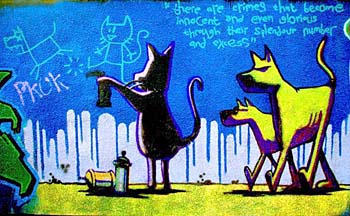
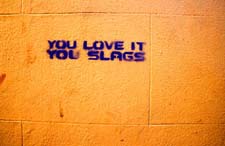
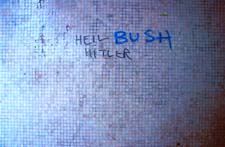
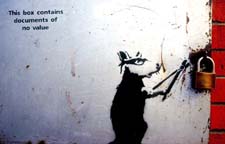
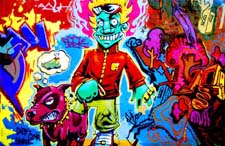
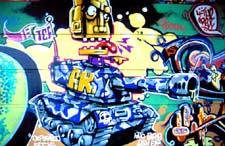
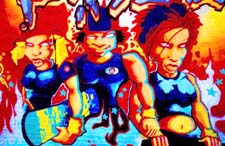
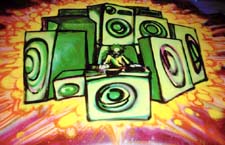
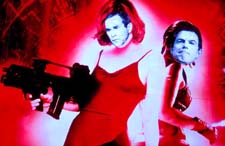
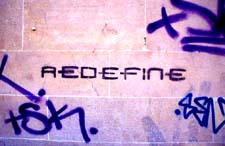
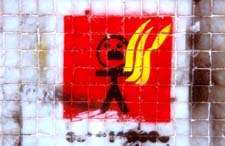
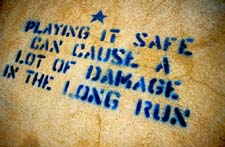
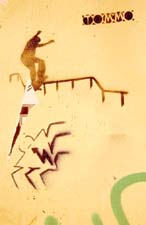
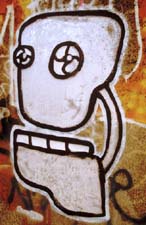
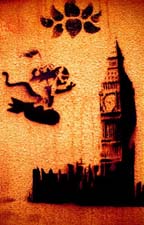

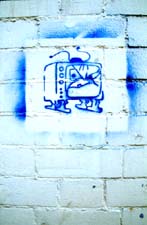

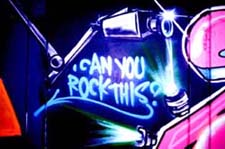
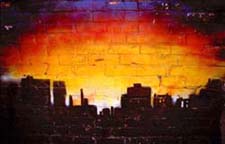
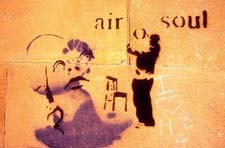
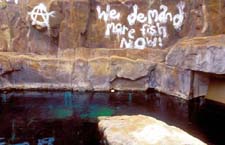
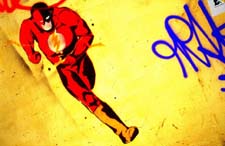
 City Walls
City Walls Art Crimes Front Page
Art Crimes Front Page